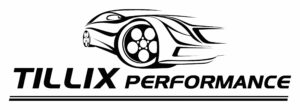There are two main factors in what makes an intercooler work effectively.
1. Pressure Drop
2. Heat Rejection
#1 Pressure Drop
Is exactly as it sounds. If you put 13psi into the intercooler and receive 10psi out of it.
You have a 3psi pressure drop across the intercooler.
Clearly the lower this drop is, the better the intercooler is allowing the air to flow through it.
Somewhere between .5psi and 2psi is a good level of drop to have. With zero drop at all, the intercooler probably doesn’t have enough internal surface area to cool the air passing through it effectively.
#2 Heat Rejection
How much heat can the intercooler pull out of the air and how fast can the intercooler pull it out.
Think of dissolving aspirin in a glass of water. Drop the whole tablet in it and it will take 2-3 minutes to dissolve completely. The surface are of the aspirin tablet we will say is 3cm2 (the whole outside of it)
Crush the aspirin tablet up to a powder, drop it in and watch it dissolve in a matter of seconds.
What we have effectively done is increase the surface are of it to say 30cm2. By having smaller pieces, more of it is in contact with the water at the same time allowing better mixing.
Same rule applies with intercooling. Having fins or tabulators inside the tube allows a lot more of the air inside to be in contact with the intercooler at the same time vastly reducing the time taken to cool, and allowing more cooling to be done for a given size intercooler.
Water to Air Intercoolers VS Air to Air Intercoolers
The first thing to say in this matter is that neither is perfect or best for every situation.
Both have pro’s and con’s which I will attempt to outline here, but do not use this as a definitive guide as to what is going to work for your particular setup
Water to Air
- Pro – Short distance from turbocharger to intercooler means less air volume needs to be pumped to fill the intercooler and associated pipe work.
- Pro – Water has around 4X the capacity to cool than air does
- Pro – Vehicles with little frontal room can house a radiator for the system elsewhere without the need for long intercooler pipes.
- Pro – Even when the vehicle speed is very low the intercooler will still work extremely efficiently for an extended amount of time (depending on the total water volume)
This can be a huge advantage for a 4WD doing offroad tracks or slow sand driving.
- Con – Cost. A water to air intercooler is generally quite expensive and complicated to install.
- Con – There is always a risk of damage (Corrosion or physical) that will allow water to leak from the intercooler into the engine. After using water to air intercoolers for more than 10 years I can say with confidence they are extremely reliable when correctly constructed and maintained.
- Con – Without experience, sizing the intercooler parts and determining the correct coolant flow rates will be very difficult.
- Con – Bleeding air from the system can be very difficult unless the system is well designed.
Air to Air
- Pro – Simple and reliable system.
- Pro – Quite cheap as the only parts required are an intercooler core and pipe work.
- Pro – If it is front mounted, will work extremely well with higher vehicle speed (towing, touring etc..)
Top mount intercoolers do still work but are not as effective. - Pro – Huge variety of bolt on kits available for almost every vehicle on the market.
- Con – Long pipework with a lot of bends can effect the engines throttle response and speed at which boost is built.
- Con – Requires a large area either on top of the engine or in front of the radiator for the intercooler to be placed.
This can either act as a heat sink sitting ontop of the engine, or reduce flow through the radiator when front mounted. - Con – Many joints are normally required to connect the entire system which can be prone to leaking or blowing off if the pipes do not have correct lips or beads.
- Con – At low vehicle speed little to no airflow is provided which means the intercooler will very rapidly reach the temperature of the boosted air traveling through it.
Conclusion
It is clear to see, many considerations must be taken when choosing what is going to benefit your own vehicle.

